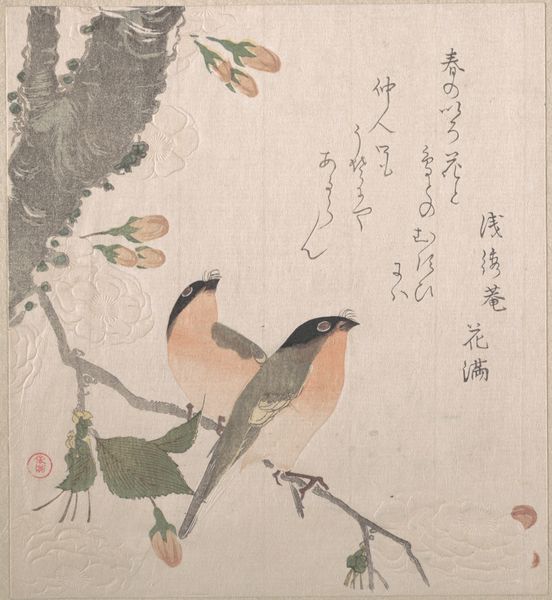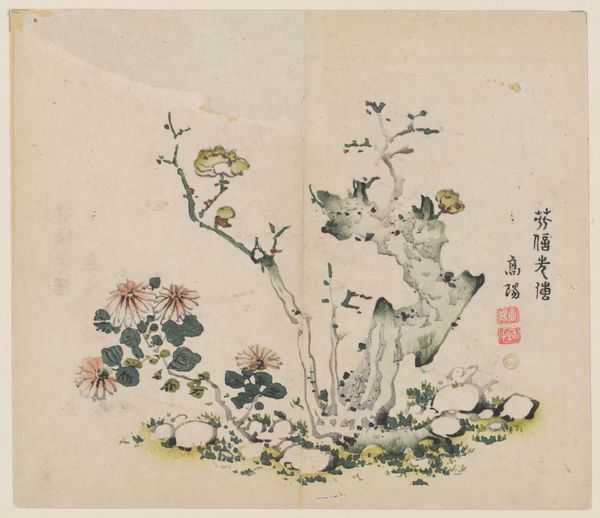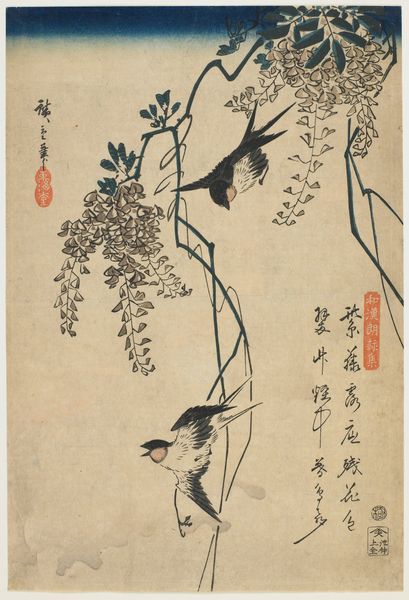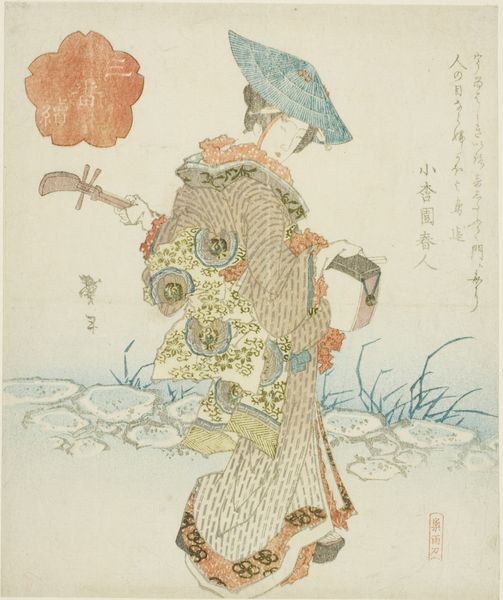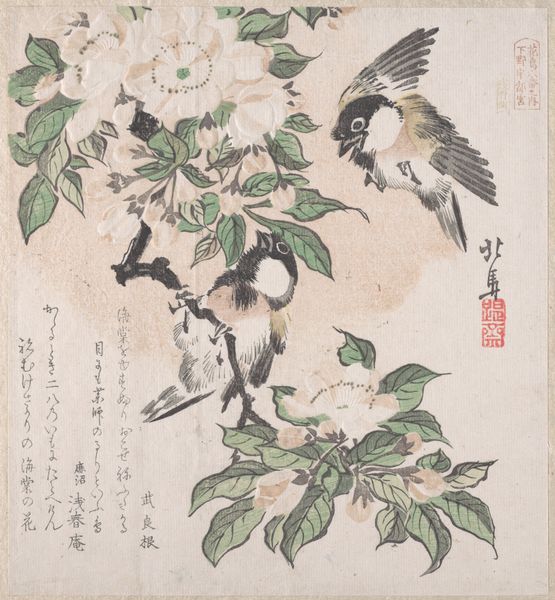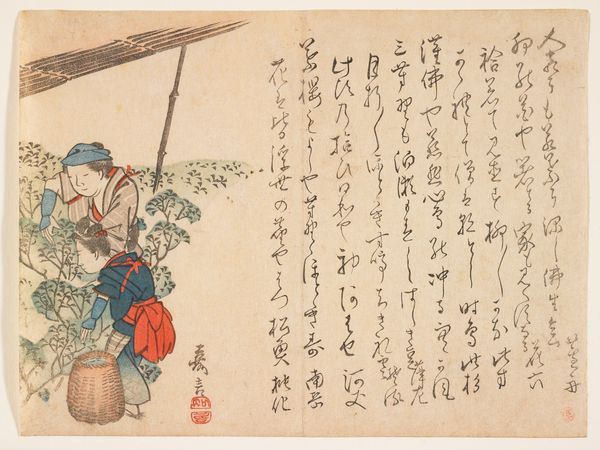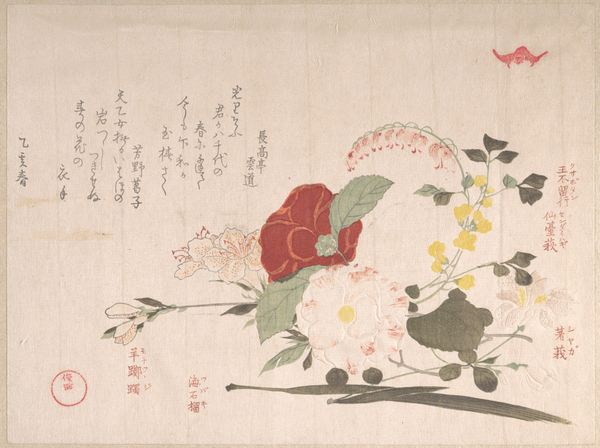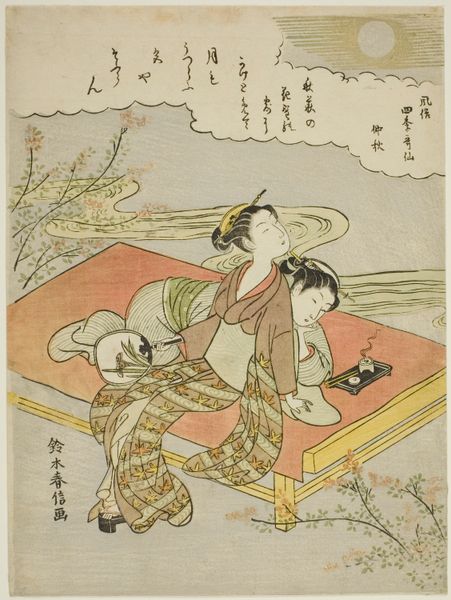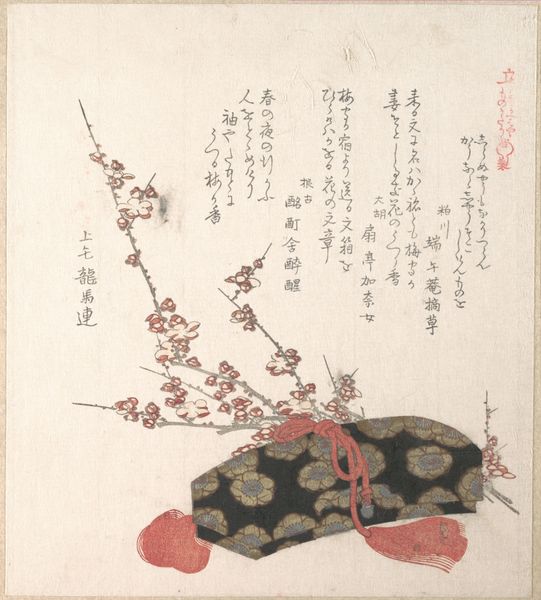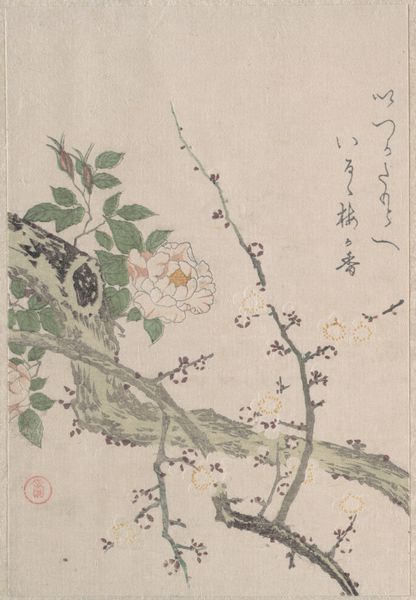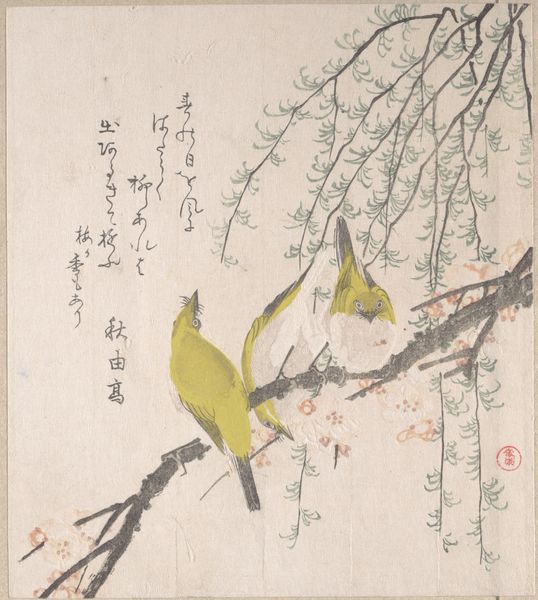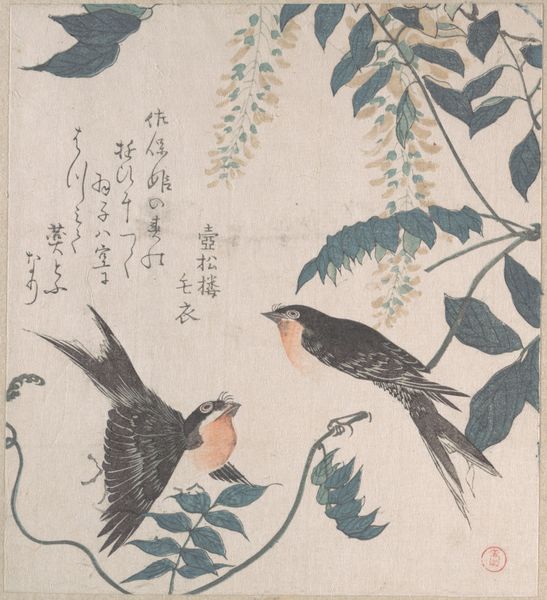
print, watercolor, woodblock-print
#
water colours
#
narrative-art
# print
#
asian-art
#
bird
#
flower
#
ukiyo-e
#
watercolor
#
woodblock-print
#
plant
#
watercolor
#
realism
Copyright: Public domain
Curator: So lovely to be here today. I’d like to introduce you to Utagawa Hiroshige’s "Camellia and Bush Warbler," a woodblock print dating back to 1844. It sings of spring, don't you think? Editor: Absolutely. It has this wonderful airy feel. Like the warbler's song just might drift right off the page. Though, I confess, I'm always fascinated by the 'how' of these things, how printmakers coax such delicacy from carved wood. Curator: The technique is astonishing, truly. Imagine the precision, the layering of colors. Hiroshige masterfully captured not only the visible reality of the camellia and bird but the very essence of fleeting beauty, don't you think? Editor: Yes, and the labor... each colour likely required a separate block, painstakingly carved. These Ukiyo-e prints, seemingly ephemeral, actually involve significant, skilled work. It changes your perspective when you think of it not just as an image, but as the outcome of an industrial-like artistic practice. Curator: It's almost a meditation on nature's cycles. The camellia, so vibrant, paired with the warbler, a messenger of seasons. A constant theme of renewal. Editor: Renewal, certainly. I also see something more grounded. Prints like these weren't just art; they were commodities, circulated widely. They fueled a market, reflecting the tastes and even anxieties of the urban population who consumed them. The camellia becomes a thing itself in commerce. Curator: Do you suppose people saw these as snapshots, ways to feel closer to nature's beauty? It seems there’s always a longing for nature, especially amongst urban folk. Editor: Possibly, but I wonder, was it more about possession? The print allows you to 'own' a fleeting moment, a bit of nature. It transforms the experience into a consumable object. Curator: Maybe we’re both right. It’s art. Commerce. And deeply beautiful, though I would suggest that our current culture undervalues beauty. These elements rarely exist in a vacuum, but aren't these dialogues so revealing? Editor: Revealing indeed. I appreciate understanding not only the artistry, but the context of the process that went into the artmaking, it has changed my appreciation of the natural world depicted within. Thank you.
Comments
No comments
Be the first to comment and join the conversation on the ultimate creative platform.
